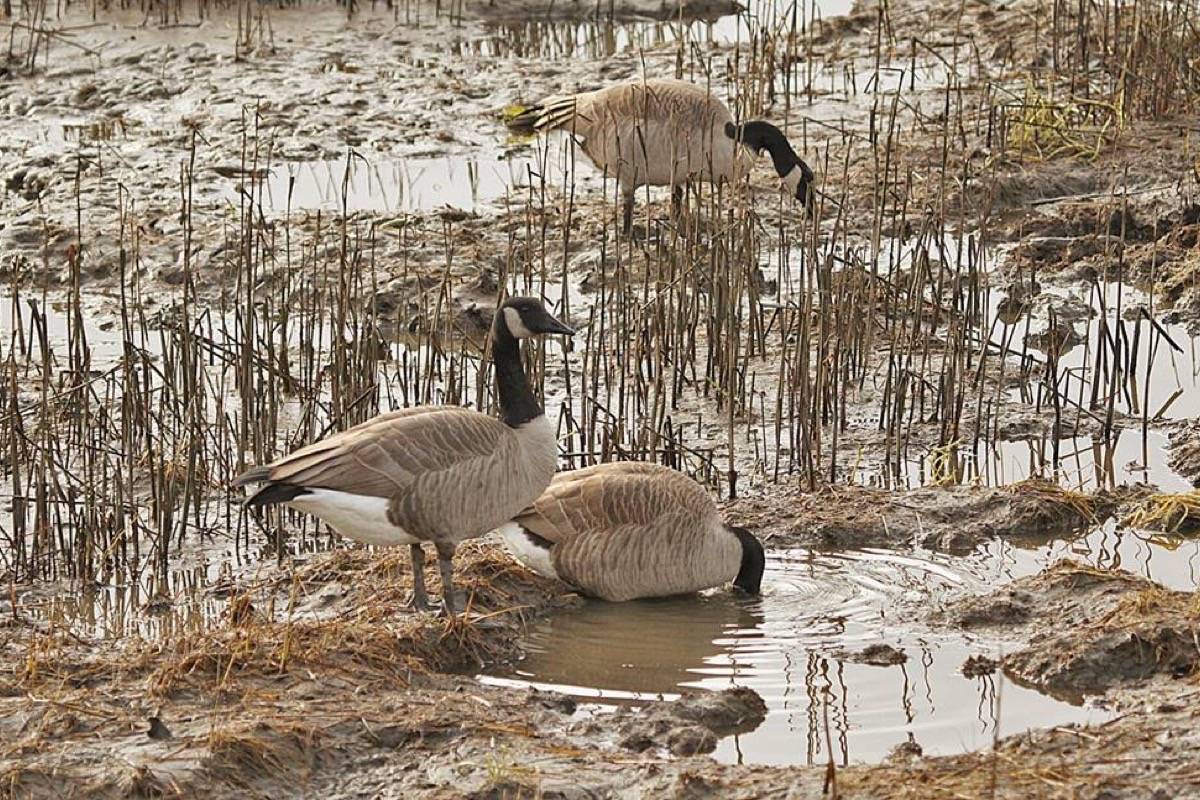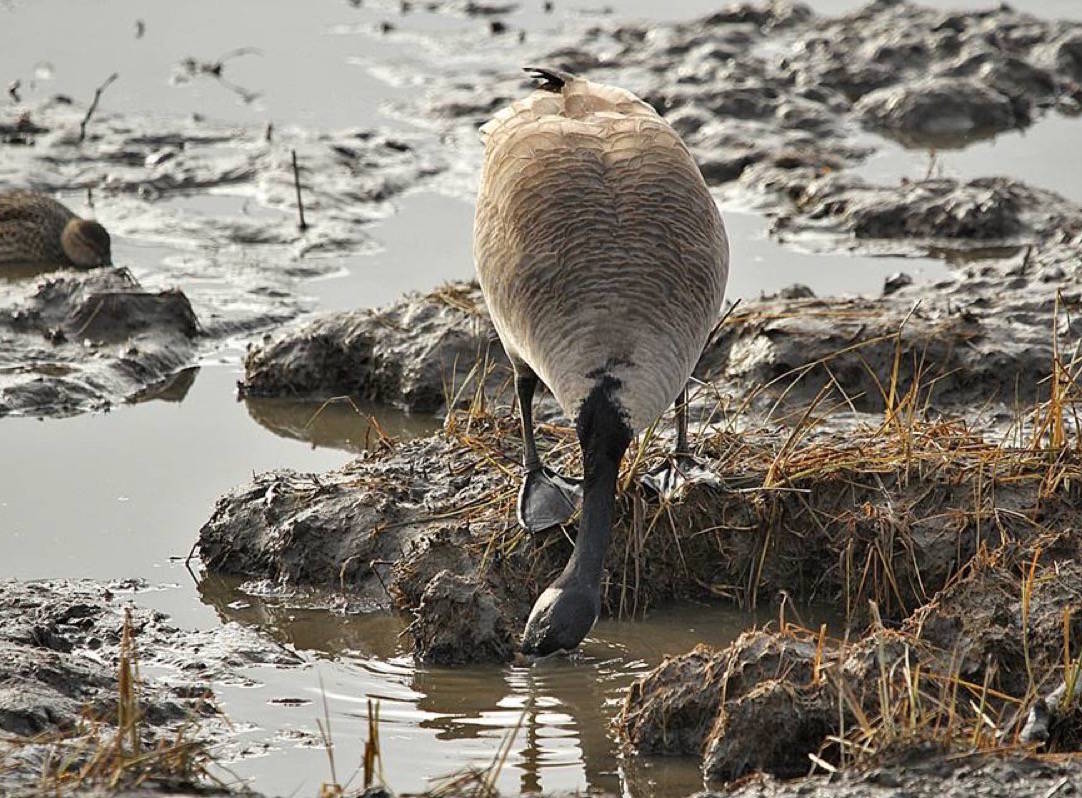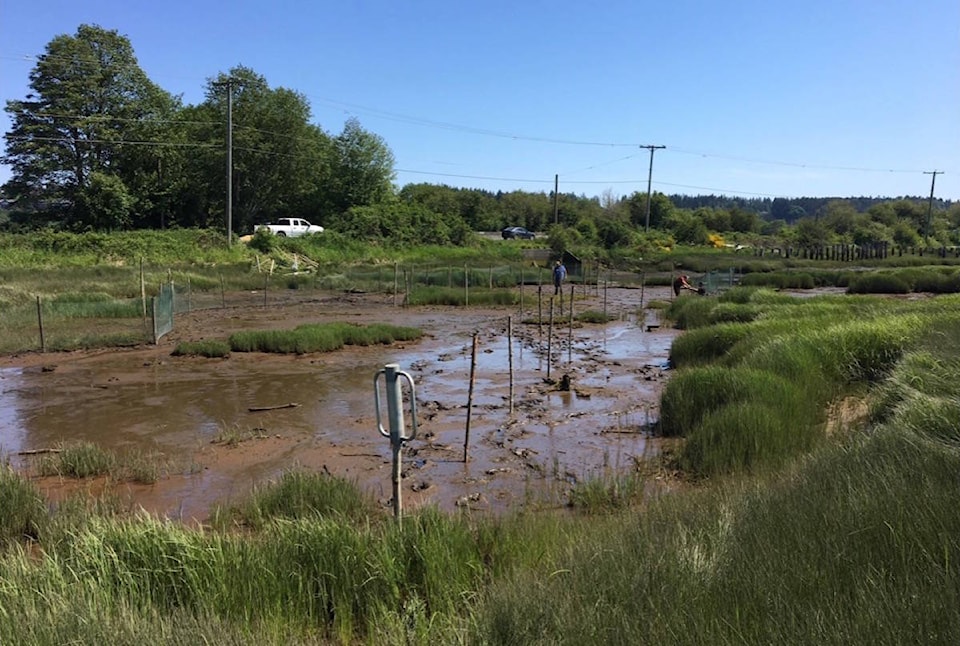K’ómoks First Nation (KFN) Guardian Watchmen have teamed up with the Guardians of Mid-Island Estuaries Society to help deal with an emerging threat to the K’ómoks Estuary.
The society has been rehabilitating Vancouver Island estuaries since 2010, and has been studying resident Canada Geese – one of the main sources of estuary damage since 2008.
Introduced to the Island in the 1970s for hunting and wildlife viewing, Canada Geese have flourished to an extent where they are overwhelming ecosystems vital to other species, such as salmon.
Geese overgraze the vegetation and grub the roots of the ‘marsh platform’ – a thick accumulation of nutrient-dense soils from land, freshwater aquatic and marine sources bound together by vegetation. One plant, Carex lyngbyei or Lyngbye’s Sedge, has taken the biggest hit. This sedge can grow to 1.5 metres and overhangs the channels.
It provides critical shelter and shade, and hosts invertebrate food sources that young salmon need before they head off to sea.
The Guardians, with support from the Pacific Salmon Foundation, and BC Hydro Fish and Wildlife Compensation Program, are fencing off parts of Hollyhock Flats on the estuary to protect remaining sedges and eroding marsh platforms.
Led by Cory Frank, they have developed a restoration solution to utilize young alder to hold the fencing in place while allowing salmon fry to move in and out of the area.
Other goose-preferred plants such as arrowgrass will thrive in the absence of geese, and smaller birds such as Red-Winged black birds and Kingfishers use the alder poles as perches.
Next year, the Guardians will begin re-vegetating areas with sedges from nearby donor sites. Ongoing monitoring will measure re-growth and use of the estuary by salmon and other species.
“With habitat loss, warming seas, ocean acidification, overfishing – the salmon and future generations need this healthy viable habitat to ensure resiliency within the estuary,” said Tim Clermont, the society’s executive director.
“We are fortunate that KFN and others are so committed to the health of natural habitats.”
“Salmon are the lifeblood of many Aboriginal communities, and without the habitat to help sustain salmon stocks as they migrate to the estuary, we will all suffer in the decline of these stocks,” Frank said.
“The K’ómoks Estuary has fed our people for thousands of years, and with the restoration work, and the work of many other community and volunteer groups, we can all benefit from this habitat restoration in the future.”


